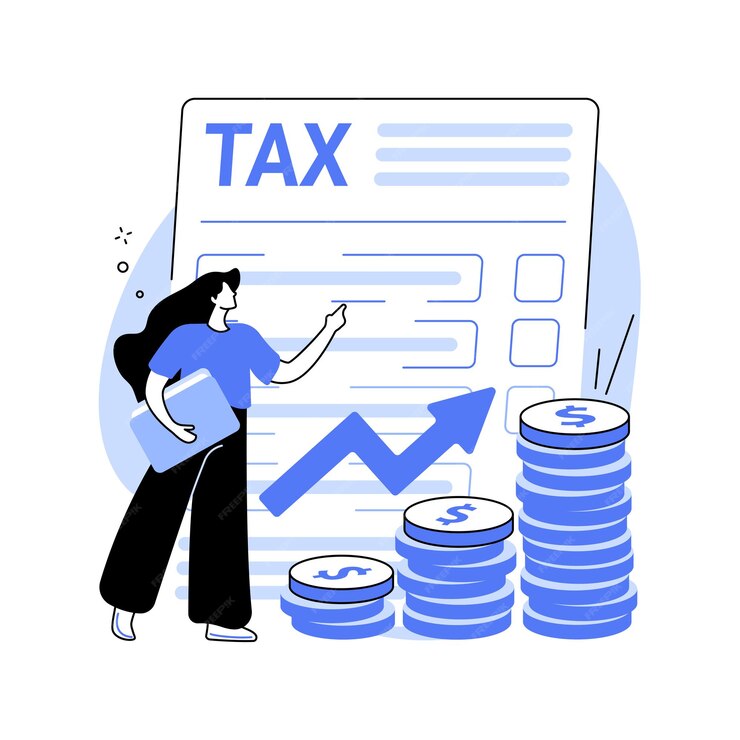+44 (0) 2071013814
Understanding UK Tax Brackets in 2024/25:
A Comprehensive Guide
by Accountrivia Info HUB
January 07, 2025

For UK business owners and individuals alike, staying informed about the current tax brackets is essential for effective financial management. While the UK tax system may seem complex, understanding income tax rates, thresholds, and allowances can simplify tax planning and help avoid surprises. Let’s break down the details for 2024 and ensure you’re equipped to handle your tax obligations confidently.
This guide will cover the following:
What Are the Current UK Tax Brackets?
What Are the Current UK Tax Brackets?
The UK income tax system is divided into bands, each applying a different rate to portions of your income. For 2024/25, these brackets remain unchanged from the previous tax year:
Personal Allowance: Up to £12,570, income is tax-free. Think of this as your tax-free safety net.
Basic Rate: Income between £12,571 and £50,270 is taxed at 20%. This band encompasses most taxpayers.
Higher Rate: Earnings from £50,271 to £125,140 are taxed at 40%.
Additional Rate: For those earning above £125,140, the tax rate increases to 45%.
How Much Tax Will You Pay?
Your tax liability depends on how much of your income falls within these brackets. For example:
If you earn £55,000:
The first £12,570 is tax-free.
£37,700 (£12,571–£50,270) is taxed at 20%, resulting in £7,540.
The remaining £4,730 (£50,271–£55,000) is taxed at 40%, adding £1,892.
Total Tax: £9,432. Using tools like online tax calculators or consulting professionals can make these calculations much easier.
If you need assistance with filing your self-assessment tax return, please contact us.
What Is the 60% Tax Trap?
There’s a hidden “60% effective tax rate” for incomes between £100,000 and £125,140. Here’s why:
For every £2 earned over £100,000, £1 of your personal allowance is reduced.
This creates an effective tax rate of 60% on income within this range.
How to Avoid It:
Make pension contributions.
Donate to charity. These steps reduce your taxable income, restoring your personal allowance and lowering your effective tax rate.
Tax Systems in the UK
Your tax system depends on your location:
England and Northern Ireland: Standard UK tax rates apply.
Scotland: A unique system with distinct bands and rates.
Wales: Similar to England and Northern Ireland, but 10% of income tax goes directly to the Welsh Government.
Check your HMRC account to confirm your applicable system and tax code.
If you need assistance with filing your self-assessment tax return, please contact us.
Reducing Your Tax Bill: Tips for Higher Earners
If you fall into the higher or additional rate brackets, consider these strategies:
Pension Contributions: Get tax relief at your marginal rate (40% or 45%).
Marriage Allowance: Transfer up to £1,260 of your personal allowance to a basic-rate taxpayer partner, saving up to £252 annually.
Charitable Donations: Reduce your taxable income while supporting good causes.
Venture Capital Trusts: These can offer tax-efficient investment opportunities.
Understanding Taxable Income
Not all income is taxed the same way. Key types include:
Non-Savings Income: Wages, pensions, and rental income are taxed at standard income tax rates.
Savings Income: Interest from savings accounts is tax-free up to £5,000, depending on your tax band.
Dividend Income: The first £1,000 is tax-free. After that:Basic Rate: 8.75%Higher Rate: 33.75%Additional Rate: 39.35%
If you need assistance with filing your self-assessment tax return, please contact us.
National Insurance Contributions (NICs)
In addition to income tax, workers must pay NICs to fund public services like the NHS and state pensions:
Employees:12% on earnings between £12,570 and £50,270.2% on earnings above £50,270.
Self-Employed: Lower rates apply, but you’ll calculate and pay NICs through your Self-Assessment tax return.
NICs provide access to benefits like Statutory Sick Pay, Maternity Pay, and state pensions. They’re an integral part of the UK’s social safety net.
Capital Gains Tax (CGT)
Selling assets like stocks or property? Profits above £6,000 (the CGT allowance) are taxed as follows:
Basic Rate Taxpayers: 10% (18% for property).
Higher/Additional Rate Taxpayers: 20% (28% for property).
Note: Capital gains are added to your income to determine your tax band. Timing asset sales across multiple tax years can help reduce your CGT liability.
KEY TAKEAWAYS:
Check your applicable tax system via your HMRC account.
Use allowances and reliefs, like pension contributions and marriage allowance, to minimize your tax liability.
Be mindful of the personal allowance reduction if earning over £100,000.
Plan large capital gains strategically to avoid moving into a higher tax band.
